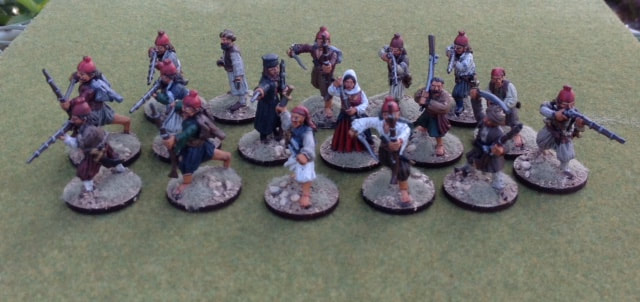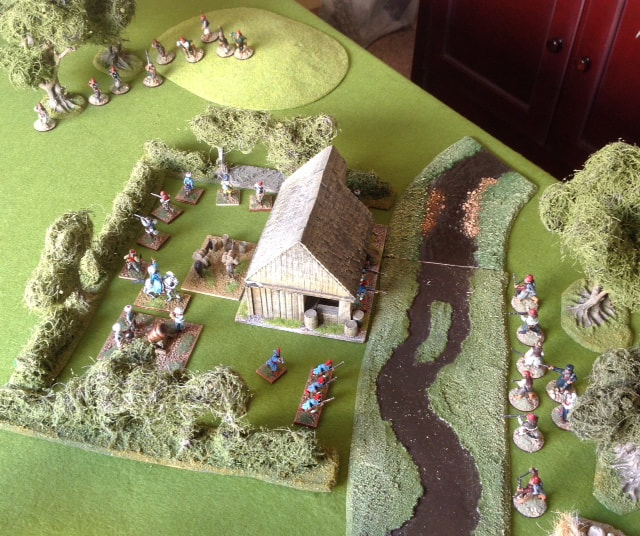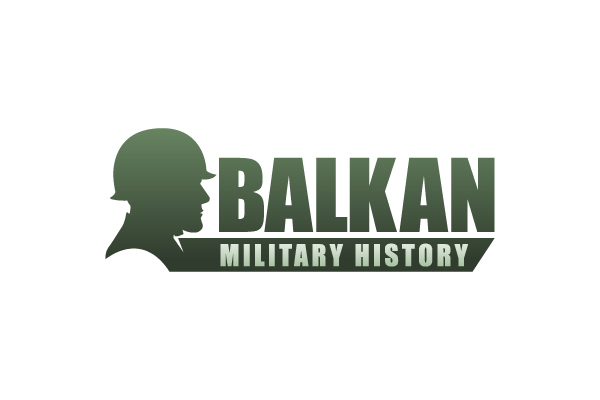- Home
- About
-
Travel
-
Features
- Dyrrachion1081
- Normans in the Balkans
- Manolada 1316
- Kosovo 1389
- Castles on the Danube
- Late Medieval Bosnian Army
- Doboj 1415
- Wallachian and Moldovan troops of the Napoleonic wars
- Anchialos 917
- Slovenian Borderlands
- The Zadruga and the Military Border
- Cretan War in the Adriatic
- Salonika 1916
- Uskoks of Senj
- Siege of Klis 1537
- Eugene in the Balkans
- Moldavian Surprise 1711
- Austro-Turkish War 1737-9
- Militargrenze
- Invading Ottoman Turkey
- Siege of Ragusa 1814
- Russo-Turkish War 1806-12
- Serbian Uprising 1815
- Ali Pasha
- Ottoman Army 1826
- Aleksinac 1876
- Shipka Pass
- Slivnitsa 1885
- Romanian Army 1878
- Austrian forts 19thC
- Kumanovo 1912
- Catalca Lines
- Adrianople 1912-13
- Kajmakcalan 1916
- The other 1918 campaign
- Macedonia air war WW1
- War of the Stray Dog
- Royal Yugoslavian armed forces
- Blunder in the Mountains
- Romanian SS
- Gebirgsjager in the Balkans
- Knights Move 1944
- Vis during WW2
- HLI in the Adriatic
- Adriatic Cruel Seas
- Dalmatian Bridgehead
- Cyprus 1974
- Transnistrian War
- Ottoman Navy Napoleonic wars
- Medieval Balkans
- Balkan lockdown quiz >
- Reviews
-
Armies
- Ancient Greeks
- Pyrrhic army of Epirus
- Dacian wars
- Goths
- Late Roman
- Comnenan Byzantine Army
- Normans
- Serbian medieval
- Albanian medieval
- Wallachian medieval
- Bosnian Medieval
- Catalan Company
- Polish 17C
- Austrian Imperialist
- Ottoman
- Austrian 18thC
- Russian Early 18thC
- Ottoman Napoleonic
- Greek Revolution
- 1848 Hungarian Revolution
- Russian Crimean war
- Romanian Army of 1877
- Ottoman 1877
- Russian 1877
- Balkan Wars 1912-13
- Macedonia WW1
- Greece WW2
- Italian Army WW2
- Gebirgsjager WW2
- Hungary WW2
- Turkey WW2
- Soviet Union WW2
- Bulgaria WW2
- Turkish Korean War Brigade
- Balkan Wars 1990s
- Links
- Books
The Second Serbian Uprising of 1815
2015 is the 200th anniversary of the Second Serbian Uprising that led to autonomy from the Ottomans for Serbs living in the Belgrade Pashalik.
By the early 19th Century Ottoman rule in the Balkans had declined to the extent that local governors became the real rulers in their localities, paying lip service to the commands of the Sublime Porte in Istanbul.
In 1801, janissary commanders murdered the reformist governor of the Belgrade province, Haci Mustafa, known as the ‘Mother of the Serbs’. Unusually, Serbs were allowed to carry weapons and had a relatively enlightened feudal system by the standards of the day. However, after the murder relations deteriorated, not only with the Serbian peasants, but also with the Sipahi landlords who also hated the janissaries.
In 1804 the janissaries slaughtered hundreds of local Serbian chieftains, known as Knez, in what they regarded as a pre-emptive strike. Trade in pigs across the border into Habsburg territory had grown despite the 1789-92 war, and weapons crossed the border into the hands of bandit groups known as Hajduk. The slaughter led to the First Serbian Uprising led by a former Habsburg volunteer and pig farmer, Karadjordje. While the uprising started with limited aims, it soon became a brutal conflict on both sides, forcing the Sultan, Selim, to dispatch an army that was defeated at Nis in the summer of 1805.
The revolt became part of wider power play in the region following Napoleon’s occupation of former Habsburg territories in the region and the Russian war against the Ottomans over the Danube principalities. Karadjordje decided to throw his lot in with the Russians. This was fine until the Russian’s made peace following Napoleon’s invasion of Russia in 1812. Free from the Russian threat, three Ottoman armies converged on Belgrade in 1813 and the uprising was at an end.
There were attempts at reconciliation under a new governor, Suleyman Pasha. However, by 1815 repression had returned and this resulted in the Second Serbian Uprising, led by Milos Obrenovic, starting on 23 April 1815. He was another pig farmer, but he learned from the first uprising and avoided major military confrontations with the Ottomans. His strategy was to negotiate a deal with the Ottomans.
Not that he didn’t raise forces and fight battles. When elected he famously said, "Here I am, here you are. War to the Turks!". There were actions at Cacak, Ljubic, Palez and Dublje before the Ottomans were driven from the Pashalik.
We don’t know a great deal about these actions. They appear to have been mostly defensive actions by the Ottomans who defended entrenchments that were stormed by the Serbian forces. On several occasions, negotiated surrenders ended the action with the Ottomans withdrawing leaving any cannon behind. The strategy was not to repeat the barbarity of the first uprising, to make a negotiated peace possible. For example at Dublje, the Bosnian Pasha was captured after his army fled. He was treated well, given presents and allowed to return home.
In mid-1815, the first negotiations began and agreement was reached on a form of partial autonomy. The Ottomans were wary of the Russians after Napoleon’s defeat at Waterloo and were busy with unrest elsewhere in the empire. In 1816, formal documents acknowledged the Serbian Principality under which they paid a yearly tax to the Porte and had a garrison of Turkish troops in Belgrade until 1867. However, it was, in most other matters, an independent state.
In 1817, Karadjordje, the leader of the First Uprising, returned to Serbia as an emissary of the Greek revolution and was assassinated at Obrenović's orders. Wider revolution in the Balkans was no part of Obrenovic’s strategy. Obrenović later received the title of Prince of Serbia and Serbia gained formal independence in 1878 under the Treaty of Berlin.
The Serbian forces of the uprising would be irregulars, although not without significant military experience. Not only did they have a right to bear arms, but also had been formed into militia and Hayduk units. Serbian refugees from the first uprising living in the Banat and Syrmia also crossed the border to join them. However, the Austrian’s remained neutral, as they were more concerned that the uprising would undermine their Grenzer regiments in the military border.
The Ottoman army would have been typical of the period with provincial janissaries, sipahi, and segban infantry. Numbers are as always difficult to assess, although Ranke says there were 10,000 Ottoman troops in the Pashalik at the outbreak of the uprising.
Below are my Serbian troops of the period. From paintings they looked very similar to the Greeks and so I have used 28mm figures from the range by Steve Barber.
By the early 19th Century Ottoman rule in the Balkans had declined to the extent that local governors became the real rulers in their localities, paying lip service to the commands of the Sublime Porte in Istanbul.
In 1801, janissary commanders murdered the reformist governor of the Belgrade province, Haci Mustafa, known as the ‘Mother of the Serbs’. Unusually, Serbs were allowed to carry weapons and had a relatively enlightened feudal system by the standards of the day. However, after the murder relations deteriorated, not only with the Serbian peasants, but also with the Sipahi landlords who also hated the janissaries.
In 1804 the janissaries slaughtered hundreds of local Serbian chieftains, known as Knez, in what they regarded as a pre-emptive strike. Trade in pigs across the border into Habsburg territory had grown despite the 1789-92 war, and weapons crossed the border into the hands of bandit groups known as Hajduk. The slaughter led to the First Serbian Uprising led by a former Habsburg volunteer and pig farmer, Karadjordje. While the uprising started with limited aims, it soon became a brutal conflict on both sides, forcing the Sultan, Selim, to dispatch an army that was defeated at Nis in the summer of 1805.
The revolt became part of wider power play in the region following Napoleon’s occupation of former Habsburg territories in the region and the Russian war against the Ottomans over the Danube principalities. Karadjordje decided to throw his lot in with the Russians. This was fine until the Russian’s made peace following Napoleon’s invasion of Russia in 1812. Free from the Russian threat, three Ottoman armies converged on Belgrade in 1813 and the uprising was at an end.
There were attempts at reconciliation under a new governor, Suleyman Pasha. However, by 1815 repression had returned and this resulted in the Second Serbian Uprising, led by Milos Obrenovic, starting on 23 April 1815. He was another pig farmer, but he learned from the first uprising and avoided major military confrontations with the Ottomans. His strategy was to negotiate a deal with the Ottomans.
Not that he didn’t raise forces and fight battles. When elected he famously said, "Here I am, here you are. War to the Turks!". There were actions at Cacak, Ljubic, Palez and Dublje before the Ottomans were driven from the Pashalik.
We don’t know a great deal about these actions. They appear to have been mostly defensive actions by the Ottomans who defended entrenchments that were stormed by the Serbian forces. On several occasions, negotiated surrenders ended the action with the Ottomans withdrawing leaving any cannon behind. The strategy was not to repeat the barbarity of the first uprising, to make a negotiated peace possible. For example at Dublje, the Bosnian Pasha was captured after his army fled. He was treated well, given presents and allowed to return home.
In mid-1815, the first negotiations began and agreement was reached on a form of partial autonomy. The Ottomans were wary of the Russians after Napoleon’s defeat at Waterloo and were busy with unrest elsewhere in the empire. In 1816, formal documents acknowledged the Serbian Principality under which they paid a yearly tax to the Porte and had a garrison of Turkish troops in Belgrade until 1867. However, it was, in most other matters, an independent state.
In 1817, Karadjordje, the leader of the First Uprising, returned to Serbia as an emissary of the Greek revolution and was assassinated at Obrenović's orders. Wider revolution in the Balkans was no part of Obrenovic’s strategy. Obrenović later received the title of Prince of Serbia and Serbia gained formal independence in 1878 under the Treaty of Berlin.
The Serbian forces of the uprising would be irregulars, although not without significant military experience. Not only did they have a right to bear arms, but also had been formed into militia and Hayduk units. Serbian refugees from the first uprising living in the Banat and Syrmia also crossed the border to join them. However, the Austrian’s remained neutral, as they were more concerned that the uprising would undermine their Grenzer regiments in the military border.
The Ottoman army would have been typical of the period with provincial janissaries, sipahi, and segban infantry. Numbers are as always difficult to assess, although Ranke says there were 10,000 Ottoman troops in the Pashalik at the outbreak of the uprising.
Below are my Serbian troops of the period. From paintings they looked very similar to the Greeks and so I have used 28mm figures from the range by Steve Barber.


